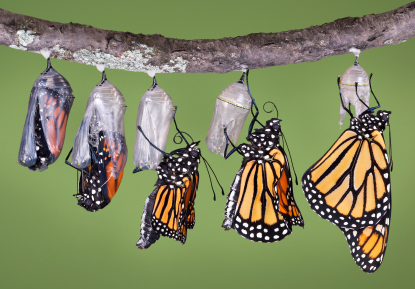If you are like me, there are just not enough hours in the day. The list of things that I need to get done regularly out distances the time I have to do them in. Keeping up with my favorite blogs, staying in tune with things on twitter and staying on top of new product and features often fall by the wayside because it takes so much time to go to all those pages and find the content I want.
Recently we updated the Promega PubHub page on our website with the hopes that it will help you use the time you spend visiting the PubHub page more efficiently. In addition to latest technical articles from Promega, useful lab facts and the ever-popular cartoons, we now offer a live feed of our Promega Connections Blog posts, tweets from @Promega and a list of new products.
We know that your time is valuable, and if you are interested in the articles and more from Promega, there is now one page to see it all.
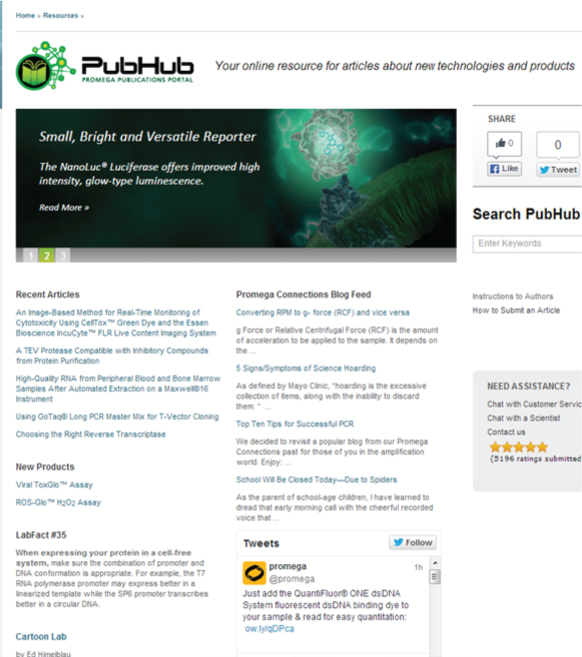
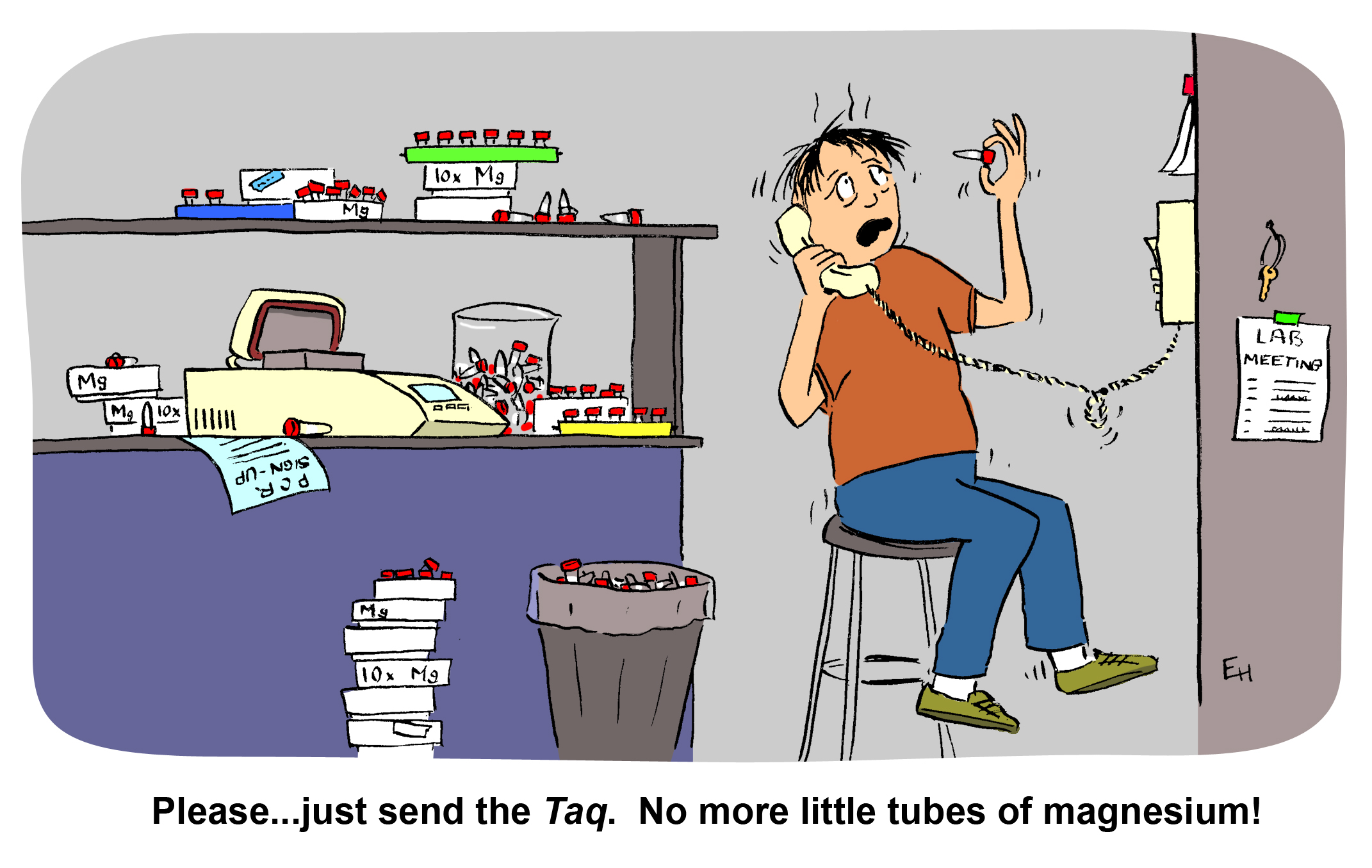
 As the parent of school-age children, I have learned to dread that early morning call with the cheerful recorded voice that informs me that school has been canceled or delayed. Here in Wisconsin, these calls are almost always a result of inclement weather, and if we pay attention to the weather forecast, we typically know the night before that a delay or cancelation is a possibility. Every once and awhile though, that call comes unexpectedly. On those mornings, while our kids dance around like deranged snow-bound monkeys, my husband and I drag out phones and calendars and begin the process of deciding who will be snow-bound with the monkeys, and who will
As the parent of school-age children, I have learned to dread that early morning call with the cheerful recorded voice that informs me that school has been canceled or delayed. Here in Wisconsin, these calls are almost always a result of inclement weather, and if we pay attention to the weather forecast, we typically know the night before that a delay or cancelation is a possibility. Every once and awhile though, that call comes unexpectedly. On those mornings, while our kids dance around like deranged snow-bound monkeys, my husband and I drag out phones and calendars and begin the process of deciding who will be snow-bound with the monkeys, and who will 
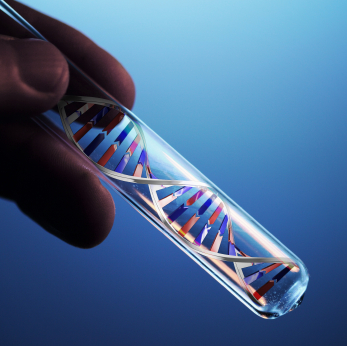 We all know that a healthy lifestyle (diet high in whole foods and low in fat, moderate exercise, managing stress and good social support) is good for us. In fact I will go so far as to say that it isn’t even news that these things help our health and well-being. What is news, or at least newly published, is that these changes may also have a positive effect on telomerase activity and telomere length (1).
We all know that a healthy lifestyle (diet high in whole foods and low in fat, moderate exercise, managing stress and good social support) is good for us. In fact I will go so far as to say that it isn’t even news that these things help our health and well-being. What is news, or at least newly published, is that these changes may also have a positive effect on telomerase activity and telomere length (1). 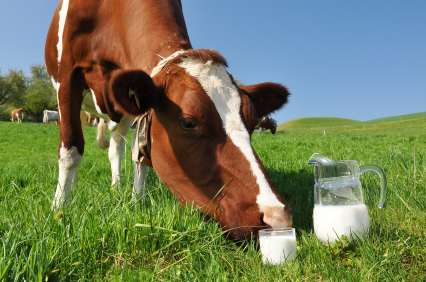 The ability for adults to digest the milk sugar, lactose, is often referred to as lactase persistence (LP), describing the continued (persistent) production of lactase into adulthood. LP is an autosomal dominant trait that is most often associated with a T allele situated 13,910 base pairs (–13,910*T allele) upstream of the lactase gene, LCT. Archaeogenetic data indicates that pre- and early Neolithic populations were largely LP-negative, and that the frequency of the LP phenotype rose dramatically in Europe around 8,000 years ago, coinciding with the Neolithic transition from a hunter-gather to an agricultural-based lifestyle (1) and the appearance of domesticated dairying animals. Today roughly 35% of adults are lactose persistent. The frequency varies dramatically by geographic region, from a high prevalence in Europe (89–90%) and to a relatively low prevalence in the eastern Mediterranean (15%)(1). The spread of lactase persistence is an often cited example of gene-culture co-evolution. You can’t separate the history of domestic dairying and the evolution of lactase persistence, but scientists are still trying to understand how these two worked together.
The ability for adults to digest the milk sugar, lactose, is often referred to as lactase persistence (LP), describing the continued (persistent) production of lactase into adulthood. LP is an autosomal dominant trait that is most often associated with a T allele situated 13,910 base pairs (–13,910*T allele) upstream of the lactase gene, LCT. Archaeogenetic data indicates that pre- and early Neolithic populations were largely LP-negative, and that the frequency of the LP phenotype rose dramatically in Europe around 8,000 years ago, coinciding with the Neolithic transition from a hunter-gather to an agricultural-based lifestyle (1) and the appearance of domesticated dairying animals. Today roughly 35% of adults are lactose persistent. The frequency varies dramatically by geographic region, from a high prevalence in Europe (89–90%) and to a relatively low prevalence in the eastern Mediterranean (15%)(1). The spread of lactase persistence is an often cited example of gene-culture co-evolution. You can’t separate the history of domestic dairying and the evolution of lactase persistence, but scientists are still trying to understand how these two worked together. 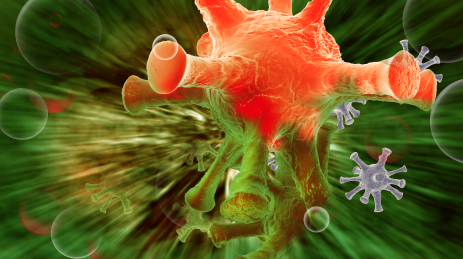 Microorganisms; they are the most abundant form of life. They are all around us, silent, unseen and undetected. The number of ‘species’ of archaea and bacteria climbs every year and is predicted to rise well past one million (1). Despite their abundance, we know very little about all but a small fraction of these diverse cellular life forms because we are unable to cultivate most in a laboratory setting. In fact, 88% of all our microbial isolates belong to just four bacterial phyla (Proteobacteria, Firmicutes, Actinobacteria and Bacterioidetes; 2). The remaining branches of the microbial phylogenetic tree range from underrepresented to virtually unknown and are collectively referred to as “microbial dark matter”.
Microorganisms; they are the most abundant form of life. They are all around us, silent, unseen and undetected. The number of ‘species’ of archaea and bacteria climbs every year and is predicted to rise well past one million (1). Despite their abundance, we know very little about all but a small fraction of these diverse cellular life forms because we are unable to cultivate most in a laboratory setting. In fact, 88% of all our microbial isolates belong to just four bacterial phyla (Proteobacteria, Firmicutes, Actinobacteria and Bacterioidetes; 2). The remaining branches of the microbial phylogenetic tree range from underrepresented to virtually unknown and are collectively referred to as “microbial dark matter”.
 “Why? Why? Why?” Anyone who has been around small children has experienced the monotonous, often aggravating, seemingly endless barrage of the “W” word. Why does soap make bubbles? Why do feathers float and acorns fall to the ground? Why are baths important? Why are those flowers purple? Why can’t I be purple? Why do tigers have stripes and leopards have spots and lions don’t have anything (majestic manes not withstanding)? Why can rocks bounce (skip) off water? Why didn’t my rock bounce? Why does the plant in the window bend toward the light? Why are my eyes blue and my brother’s eyes brown?
“Why? Why? Why?” Anyone who has been around small children has experienced the monotonous, often aggravating, seemingly endless barrage of the “W” word. Why does soap make bubbles? Why do feathers float and acorns fall to the ground? Why are baths important? Why are those flowers purple? Why can’t I be purple? Why do tigers have stripes and leopards have spots and lions don’t have anything (majestic manes not withstanding)? Why can rocks bounce (skip) off water? Why didn’t my rock bounce? Why does the plant in the window bend toward the light? Why are my eyes blue and my brother’s eyes brown?